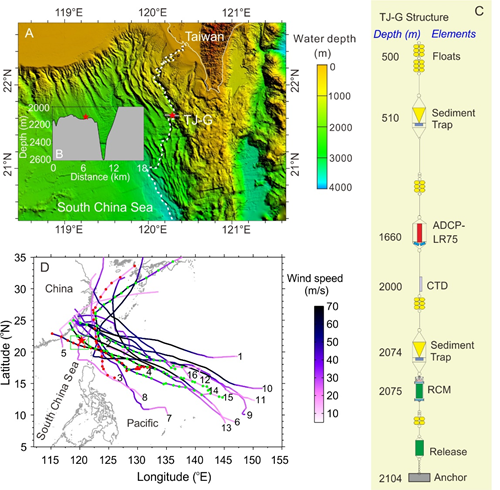Yanwei Zhang1*, Zhifei Liu1, Yulong Zhao1, Christophe Colin2, Xiaodong Zhang1, Meng Wang1, Shaohua Zhao1, and Benjamin Kneller3
1 State Key Laboratory of Marine Geology, Tongji University, Shanghai 200092, China
2 UMR 8148 CNRS-GEOPS, Université de Paris-Sud, Orsay 91405, France
3 School of Geosciences, University of Aberdeen, Aberdeen AB24 3UE, UK
Abstract:Turbidity currents regulate the transport of terrigenous sediment, abundant in carbon and nutrients, from the shelf to the deep sea. However, triggers of deep sea turbidity currents are diverse and remain debatable in individual cases due to few direct measurements and unpredictable occurrence. Here we present long-term monitoring of turbidity currents at a water depth of 2104 m on the margin of the Gaoping Submarine Canyon off Taiwan, which has the world’s highest erosion rates and wettest typhoons. The unique 3.5-year record of in situ observations demonstrates the frequent occurrence of deep sea turbidity currents, averagely 6 times per year from May 2013 to October 2016, most of which show enhanced sediment flux, raised temperature, and lowered salinity. They are attributed to elevated discharge of the Gaoping River due to typhoons traversing Taiwan. The total duration of these prolonged turbidity currents amounts to 30% of the entire monitoring period, contributing to approximately 72% of total sediment transport in the lower canyon. Our study demonstrates for the first time that typhoons are the most important triggers in the long term for frequent turbidity currents and enhanced sediment delivery into the deep sea in the typhoon-river-canyon environment.

Full article:https://doi.org/10.1130/G45178.1


